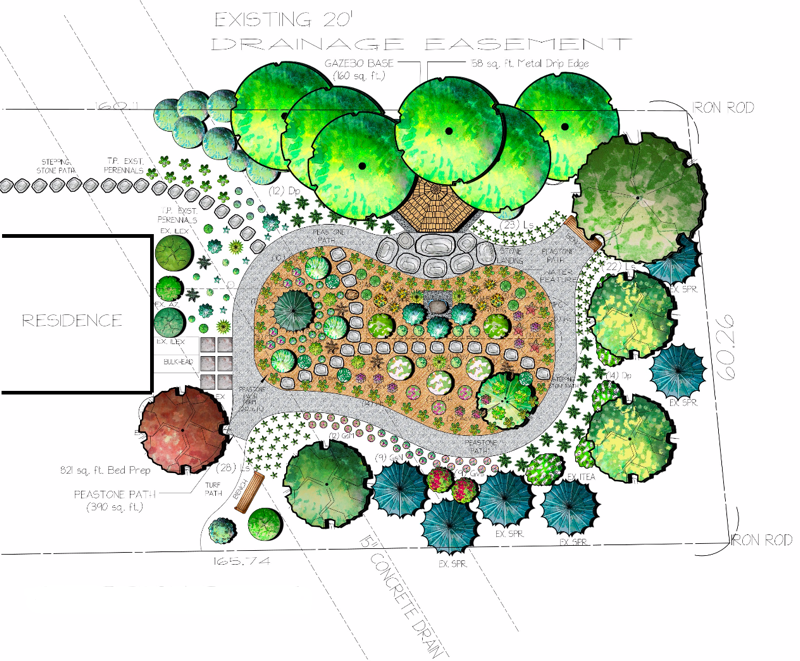Whether you are planning a landscape from scratch, renovating an old landscape, or just creating a small flower garden, the project should always start with a landscape design.
It doesn't have to be fancy, or even professional...it does have to exist though... in some shape or form.
Why?
The reason is simple...you want to succeed!

"Design is a classic whole-minded aptitude." Daniel Pink, A Whole New Mind
It is in our blood to orchestrate our surroundings. Some take to this task very easily on their own, others lament their lack of talent and find they need help, but I would encourage everyone to honor the designer in them. Collect your ideas and inspirations...they are valuable.
"[D]esign, stripped to its essence, can be defined as the human nature to shape and make our environment in ways without precedent in nature, to serve our needs and give meaning to our lives." John Heskett, Toothpicks and Logos
Design has multiple components
- Aesthetics - what looks good
- Composition - what elements compliment one another
- Validity - what will work
If you are designing a kitchen, your constraints are around space, power and budget.
If you are designing a landscape, your constraints are far more complicated because you are a co-creater with Mother Nature. She may not agree with your sense of what looks good, with what is complimentary, or with what might work. She will be unyielding on some level, so thinking through the SCIENCE and FUNCTION will eventually be necessary to complete the design process.
Before you go there however have fun and use your imagination in dreaming up what might be. Ask yourself these three questions to begin to tease out your own preferences around the design of your project.
- What AREA will I be working with?
- What are the major CONSTRAINTS of my project?
- What is the end product goal for LOOK & USE of this project space?
Give yourself time to reflect on your ideas. Write them down and collect inspiration in the form of images from magazines, books or the web. Speak to friends who have taken on landscape projects of their own. Find out what went well from them and don't forget to ask about what didn't go so well. Learn from them!
Allow time for planning, whether on your own or with professional assistance. A good rule of thumb is to give twice as much time to planning as it would take to build the projects. So a small garden may take a few days to a week of focused planning. A full yard renovation may take 3 to 6 months to plan.
Moreover, edits and mistakes are applied with the swipe of an erasure or click of a mouse!
Happy Gardening!






Leave a comment